In pictures: Albinism and perceptions of beauty
- Published
South African photographer Justin Dingwall's portrait series Albus explores the aesthetics of albinism and perceptions of beauty.
Albinism is an inherited condition that results in the absence, or near absence, of pigmentation in the eyes, skin and hair.
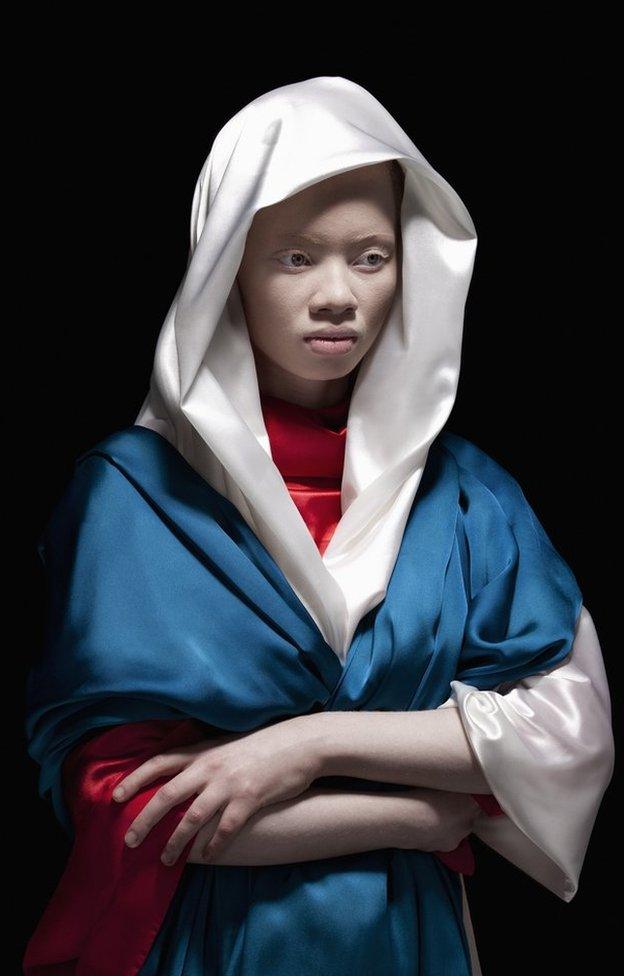
Three Marys Blue
Many people living with albinism are subject to negative public attitudes, persecution and violence.
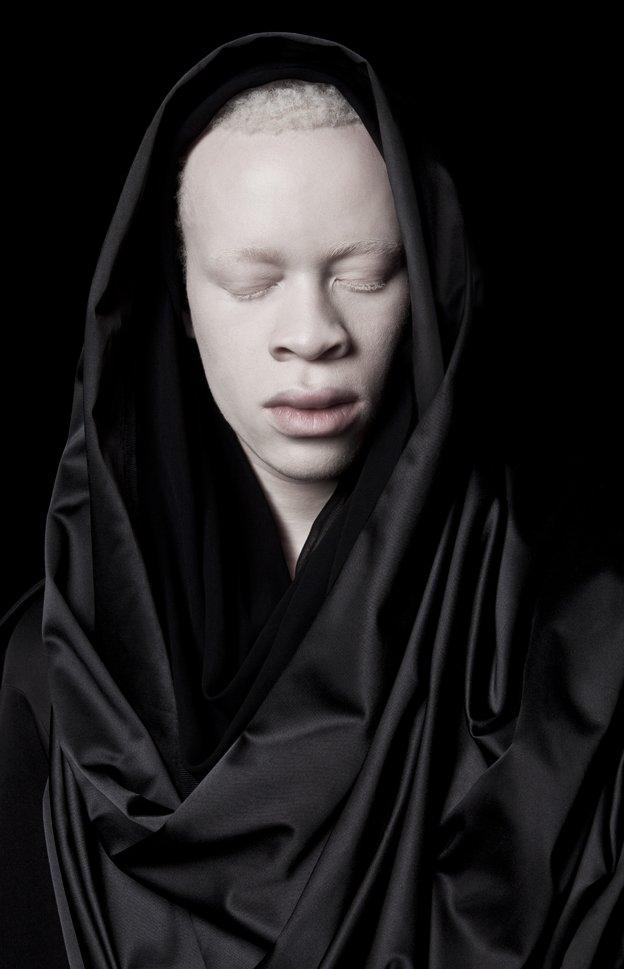
Albus II
Dingwall's project began with portraits of Thando Hopa, a legal prosecutor using her visibility to address the negative perceptions surrounding albinism.
More recent work features Sanele Xaba, a young model with albinism, and uses specific elements to create symbolic meanings.
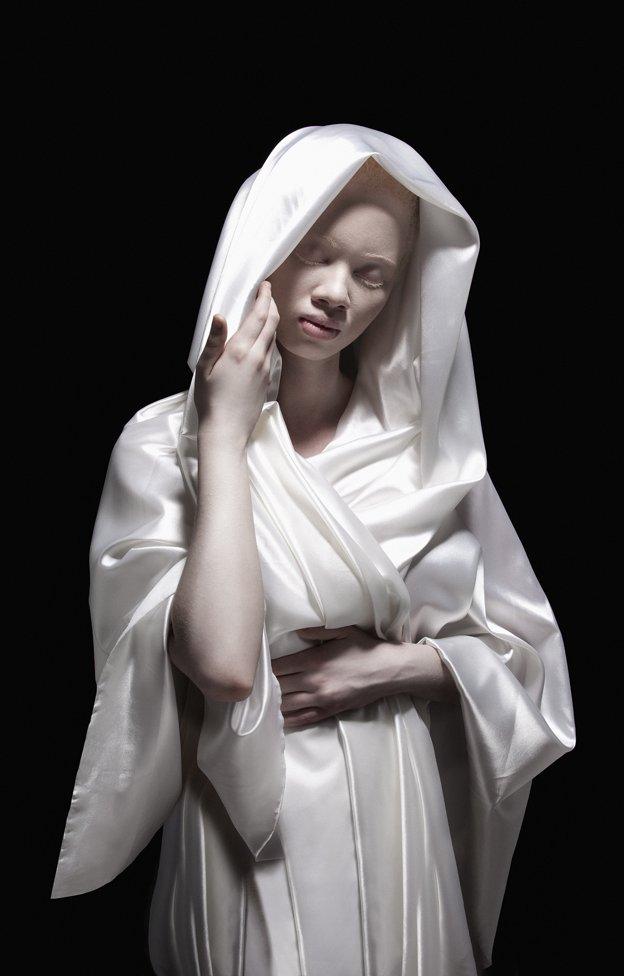
Three Marys White
"They are not about race or fashion, but about perception, and what we subjectively perceive as beautiful," says Dingwall.
"I wanted to create a series of images that resonate with humanity and make people question what is beautiful.
"To me diversity is what makes humanity interesting and beautiful."

Ascention Silver
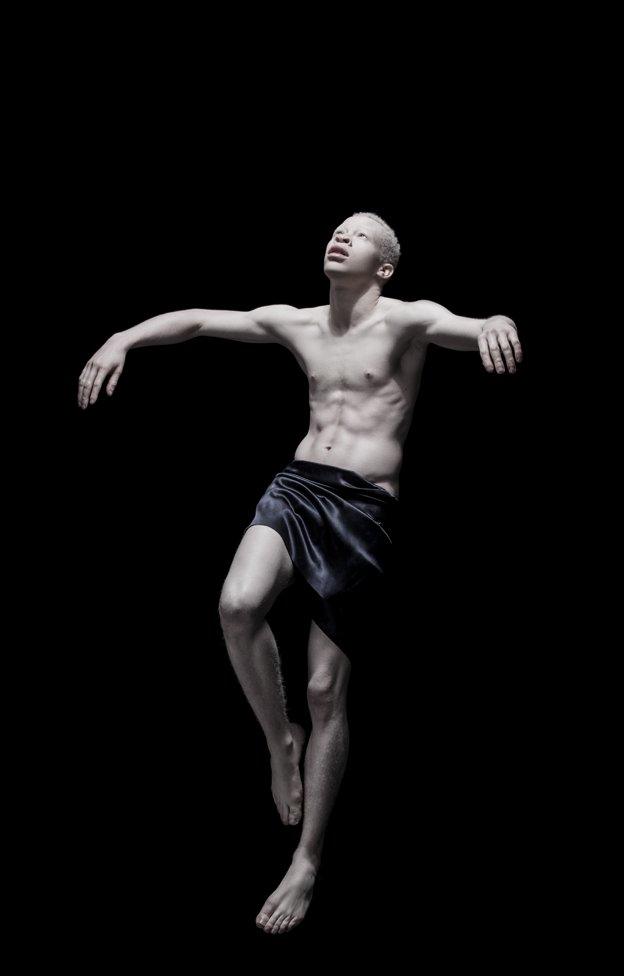
Rhapsody I
Drawing on elements from nature, Dingwall aims to alter the viewer's perspective.
"The butterfly unquestioningly embraces the changes of their environment and their body," says the photographer.
"For this reason, butterflies have become symbols of growth, surrender, transition, celebration, resurrection and fragility."
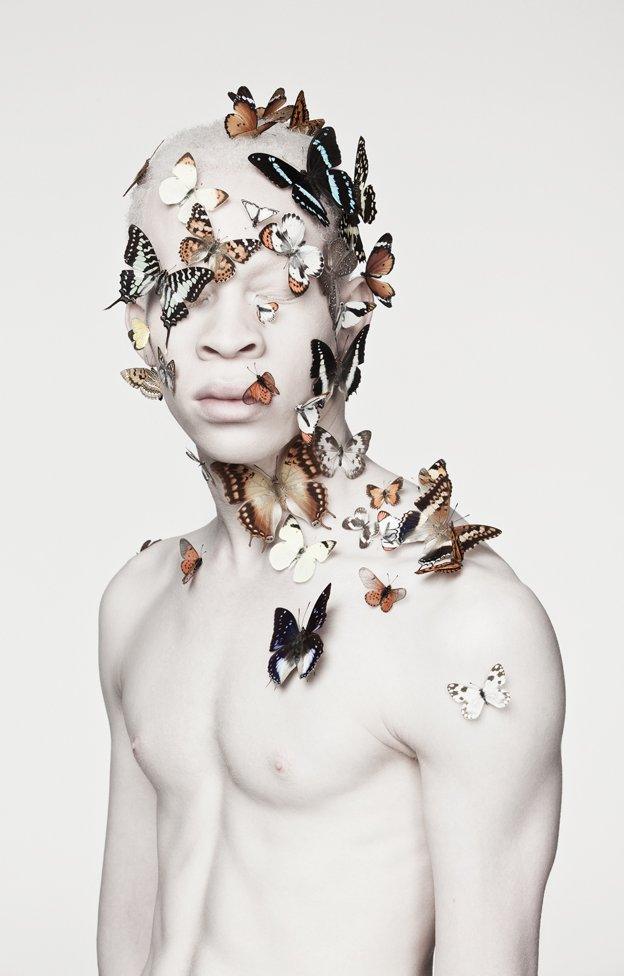
Mob II
In images such as Cerasinus and Indicum, Dingwall paints with light, using bold colours that neutralise the perception of skin tone.
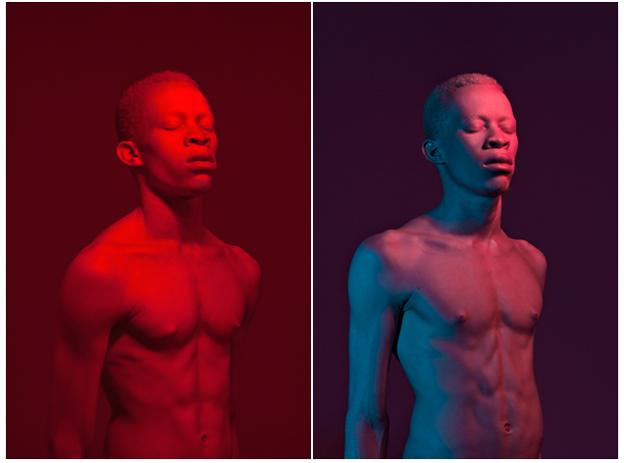
Cerasinus (left) and Indicum
Albinism is particularly prevalent in Tanzania, with one in 1,400 affected, according to a 2006 BMC Public Health report.
This compares with one in 20,000 in Western countries.
Since 2000, at least 75 people with albinism have been killed in targeted attacks in Tanzania.
Many are killed because potions made from their body parts are believed to bring good luck and wealth.
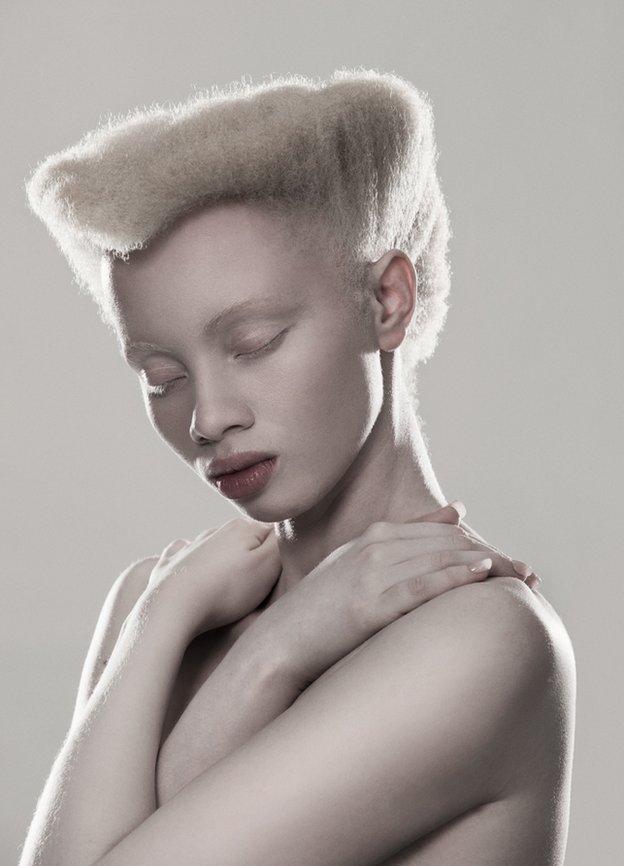
Grazia
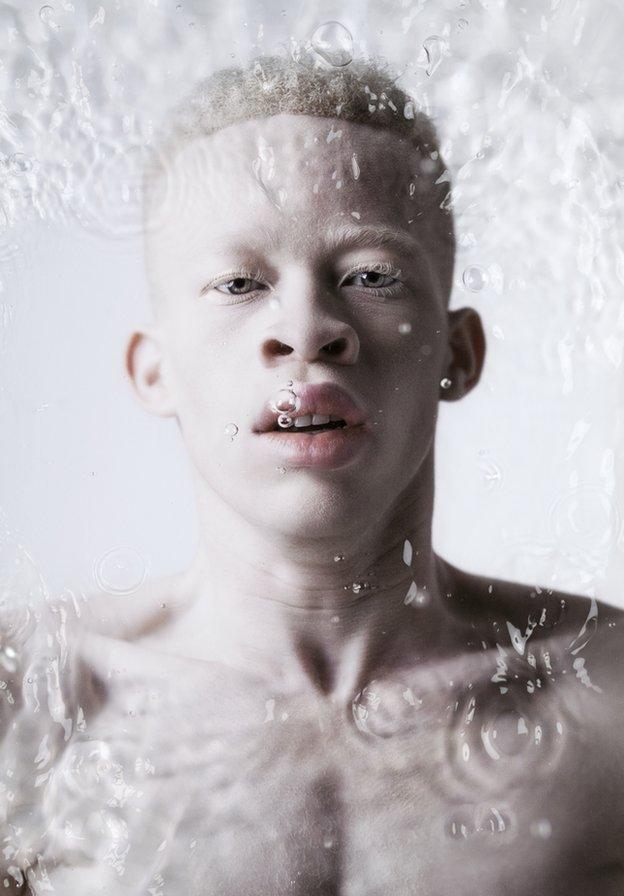
In with the new
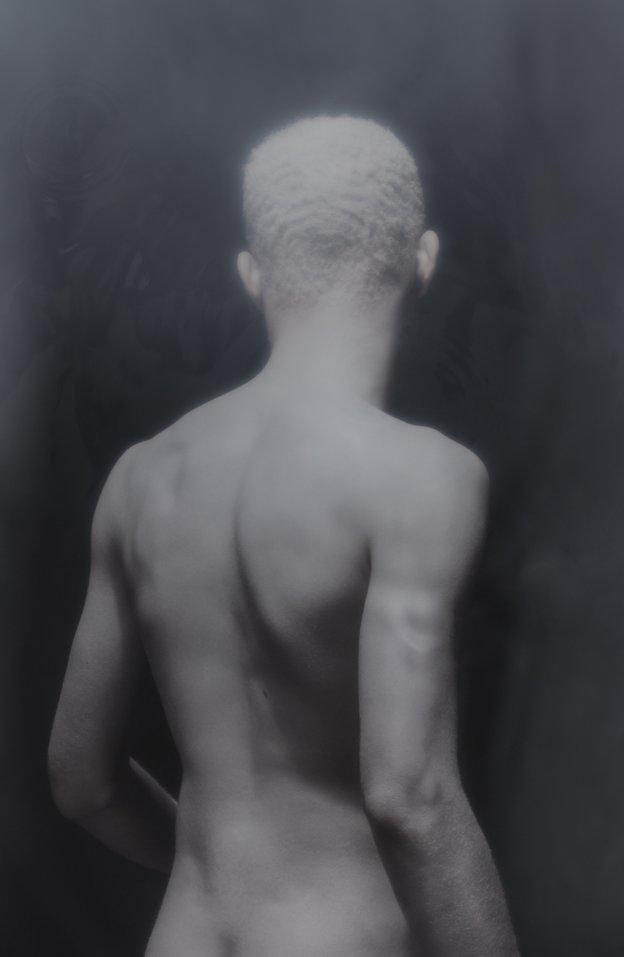
Unseen II
All photos: Justin Dingwall, external